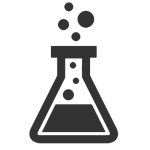Benzene
$0.00DESCRIPTION
Benzene (cyclohexa-1, 3) is the basis of a group of hydrocarbons referred to as “aromatics”. It is a clear colorless liquid, with a characteristic aromatic smell. Benzene is produced worldwide in substantial quantities, and because it is very easy to transport by ship, it is traded internationally.
Benzene-Hydrocarbons
$0.00Benzene is a chemical that is a colorless or light yellow liquid at room temperature. It has a sweet odor and is highly flammable. Benzene evaporates into the air very quickly. Its vapor is heavier than air and may sink into low-lying areas. Benzene dissolves only slightly in water and will float on top of water.
Benzene-Hydrocarbons
$0.00Benzene is a chemical that is a colorless or light yellow liquid at room temperature. It has a sweet odor and is highly flammable. Benzene evaporates into the air very quickly. Its vapor is heavier than air and may sink into low-lying areas. Benzene dissolves only slightly in water and will float on top of water.
Butane-Hydrocarbons
$0.00Butane or n-butane is an alkane with the formula C₄H₁₀. Butane is a gas at room temperature and atmospheric pressure. Butane is a highly flammable, colorless, easily liquefied gas that quickly vaporizes at room temperature. Butane is used as fuel and also as raw material in production of olefins.
Gasoil(Diesel Fuel)
$0.00A middle distillate and form of heating oil, gasoil is primarily used in heating and air-conditioned systems. Gas oil is one of the most actively traded oil products, and comes between fuel oil and the lighter products such as naphtha and gasoline. In its broader definition, it covers the oil products used for diesel automotive fuel and jet fuel.
Gas oil is also used in industries for various applications such as power generation or as a fuel in boilers, machinery and other applications is expected to fuel the demand for gas oil. Growth in disposable income along with increasing number of vehicle especially in the Asia Pacific is expected to upsurge the demand for the gasoil.
Heavy aromatic-Hydrocarbons
$0.00A complex combination of hydrocarbons obtained from distillation of aromatic streams. It consists predominantly of aromatic hydrocarbons having carbon numbers predominantly in the range of C9 through C16 and boiling in the range of approximately 165
Hydrocarbon-Light Hydrocarbon
$0.00Hydrocarbons, simply in the science of chemistry, are a group of organic materials in whose molecular structure only the atoms of the elements carbon and hydrogen are involved. Hydrocarbons, like the classification of all organic matter, fall into two groups: aliphatic and aromatic. On the other hand, hydrocarbons can be divided into two unsaturated groups and a saturated group.
Hydrocarbons-Heavy Hydrocarbon
$0.00Hydrocarbons, simply in the science of chemistry, are a group of organic materials in whose molecular structure only the atoms of the elements carbon and hydrogen are involved. Hydrocarbons, like the classification of all organic matter, fall into two groups: aliphatic and aromatic. On the other hand, hydrocarbons can be divided into two unsaturated groups and a saturated group.
Lightends-Hydrocarbons
$0.00Light ends are the light hydrocarbon gases and liquids that come off the top of distillation towers and fractionators. This usually includes refinery gas and some C3s and C4s.
MDI
$0.00DESCRIPTION
Methylene diphenyl diisocyanate is an aromatic diisocyanate. Three isomers are common, varying by the positions of the isocyanate groups around the rings: 2,2′-MDI, 2,4′-MDI, and 4,4′-MDI. The 4,4′ isomer is most widely used, and is also known as 4,4′-diphenylmethane diisocyanate.
para-xylene
$0.00DESCRIPTION
Para-Xylene is made by separating compound xylene, and is a transparent liquid with no color. It is harmful to the body. The product has high value as it is used to produce terephthalic acid, which becomes raw material for polyester, fiber, PET bottles, and films.
ParaxXylene-Hydrocarbons
$0.00P-Xylene is an aromatic hydrocarbon. It is one of the three isomers of dimethylbenzene known collectively as xylenes. The p- stands for para-, indicating that the two methyl groups in p-xylene occupy the diametrically opposite substituent positions 1 and 4













